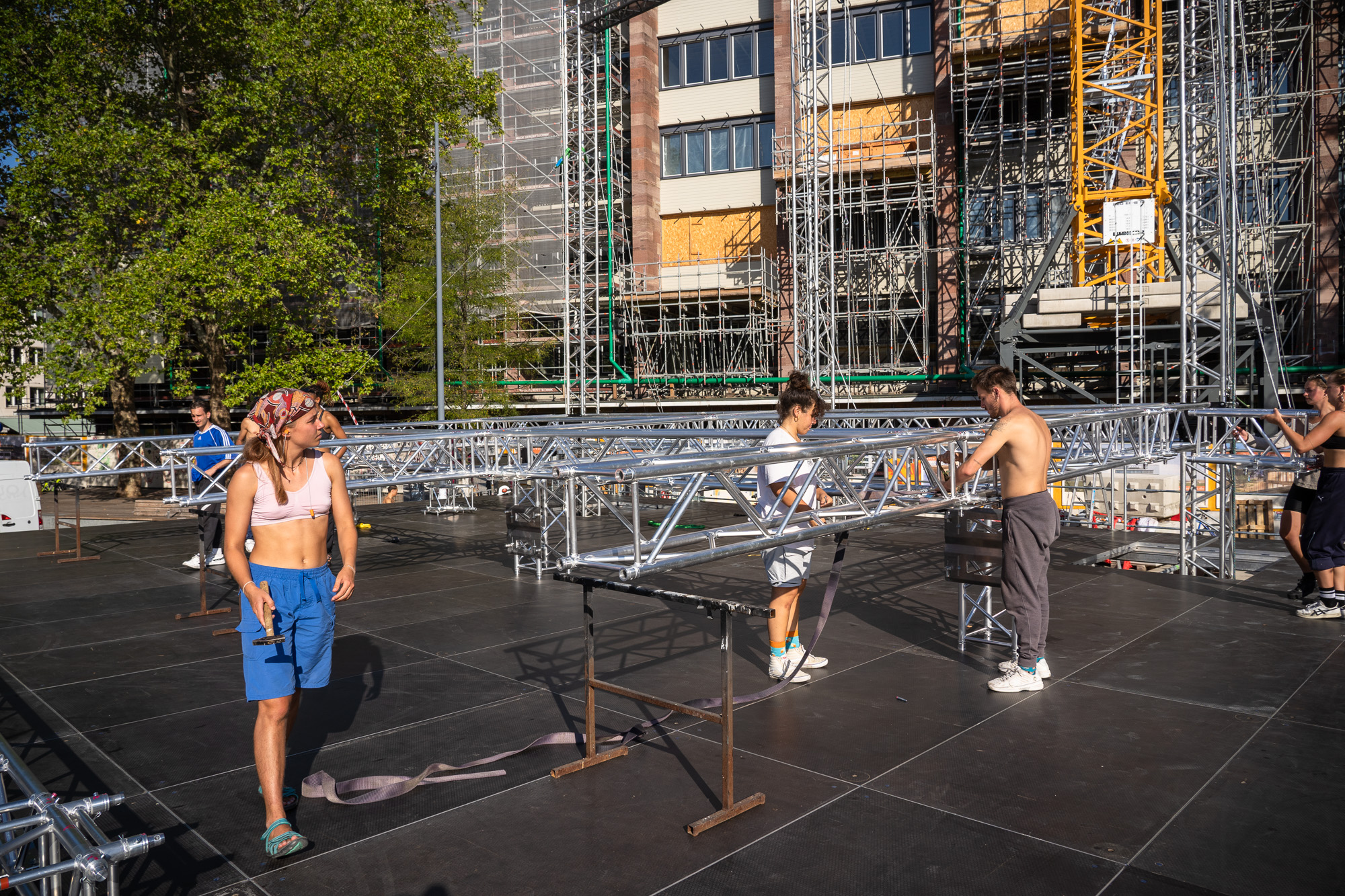
Girona: 6 y 7 de octubre
Ensayo general el 5 de octubre a las 21.00 horas.
Entrada gratuita!
Free admission!
Thoughts and questions about the content of the production
So what happens when we humans create a different world for ourselves – a better one?
A freer one ?
But better for whom and free for whom?
Do we still decide for ourselves?
Do we choose our own bubble or are we assigned to a bubble via cookies and other tracking methods?
Què passa quan els humans creem un món diferent per a nosaltres mateixos?
Triem la nostra pròpia bombolla o se’ns assigna una bombolla a través de les cookies i altres mètodes de seguiment?
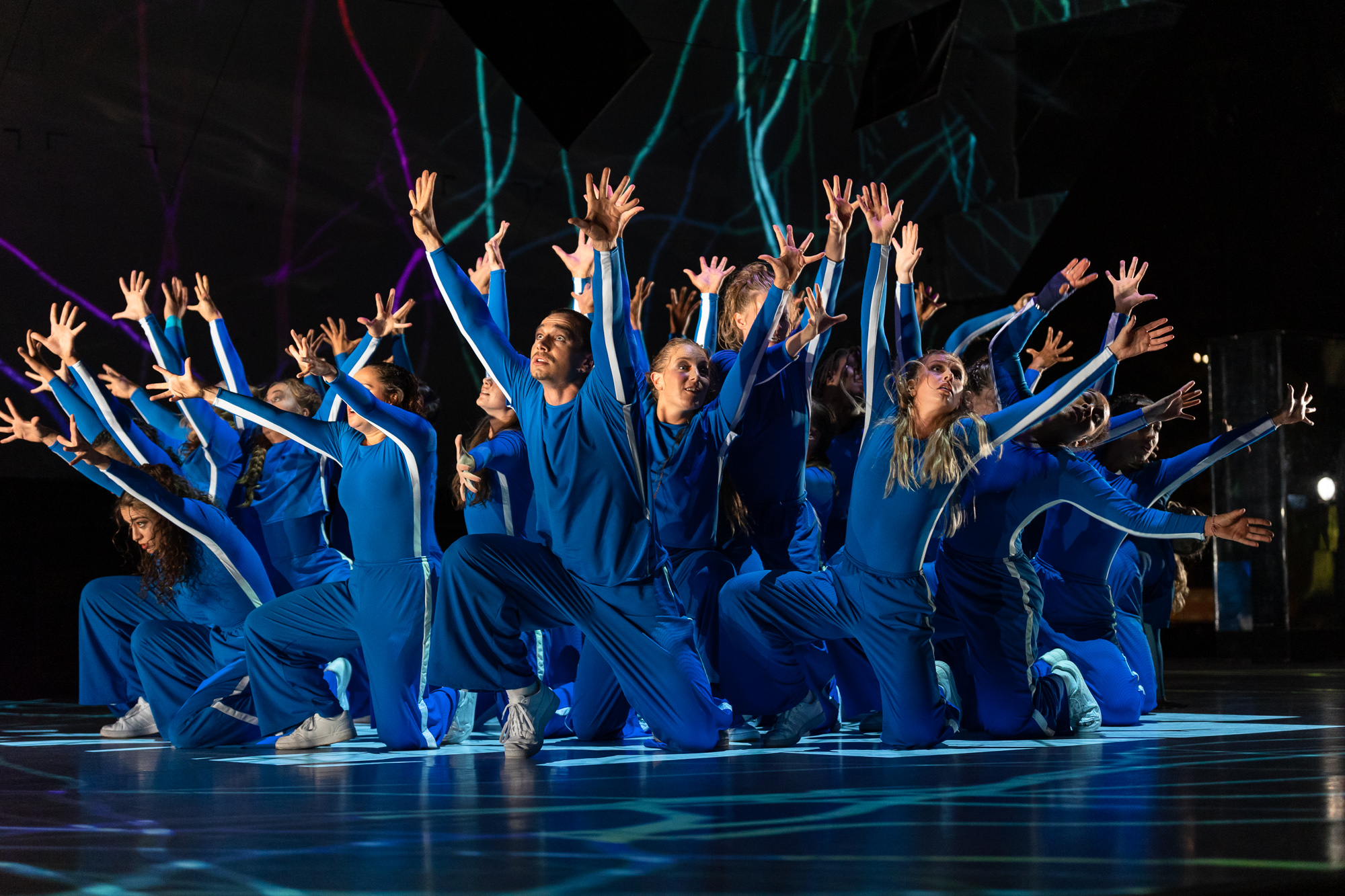
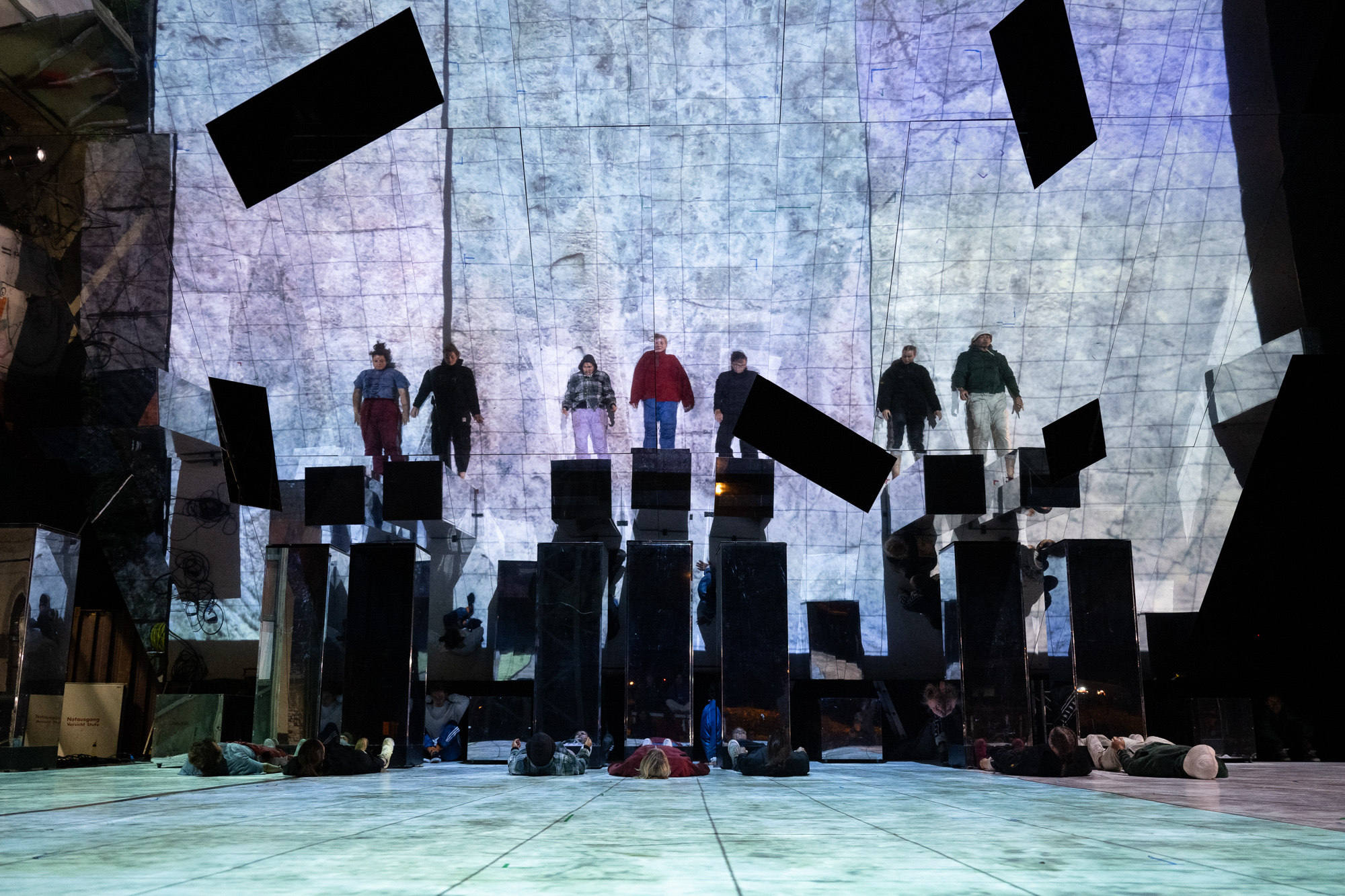
European project
People Power Partnership (PPP) is a so-called large cooperation project within the Creative Europe Programme of the EU Commission. Every year, partner institutions can join forces and submit concepts in the different categories (small: at least 3 partners from 3 countries, medium: at least 5 partners from 5 countries, and large, at least 10 partners from 10 countries). (In our case there are 14 partners from 11 countries).
These are evaluated by an independent jury of experts and about 10-15% of the applications are accepted.
Projecte Europeu:
People Power Partnership (PPP) és un gran projecte de cooperació dins del Programa Europa Creativa de la Comissió Europea. Cada any, les institucions associades poden unir-se a les convocatòries i presentar conceptes en les diferents categories (petita: almenys 3 socis de 3 països, mitjana: almenys 5 socis de 5 països, i gran, almenys 10 socis de 10 països. (En el nostre cas hi ha 14 socis d’11 països).
104 young dancers with experience in urban dance forms from 13 different European cities – eight per city – have been selected since 2021. They have been working together for several weeks in Freiburg. After the premiere, this FACE T(W)O toured throughout Europe, namely to each of the dancers‘ hometowns and will be this week a part of the festival temporada alta, with dancers from 11 European countries.
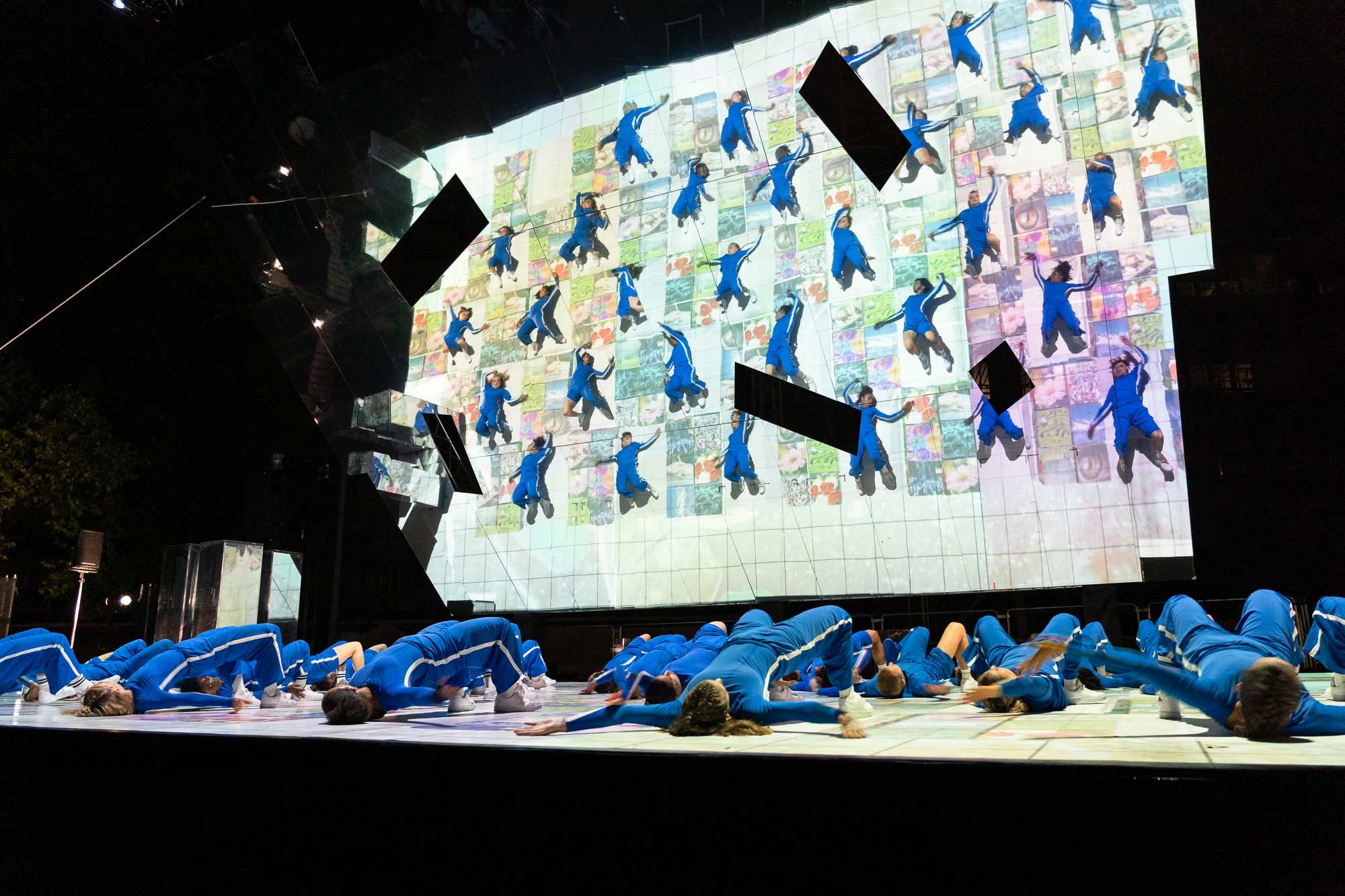
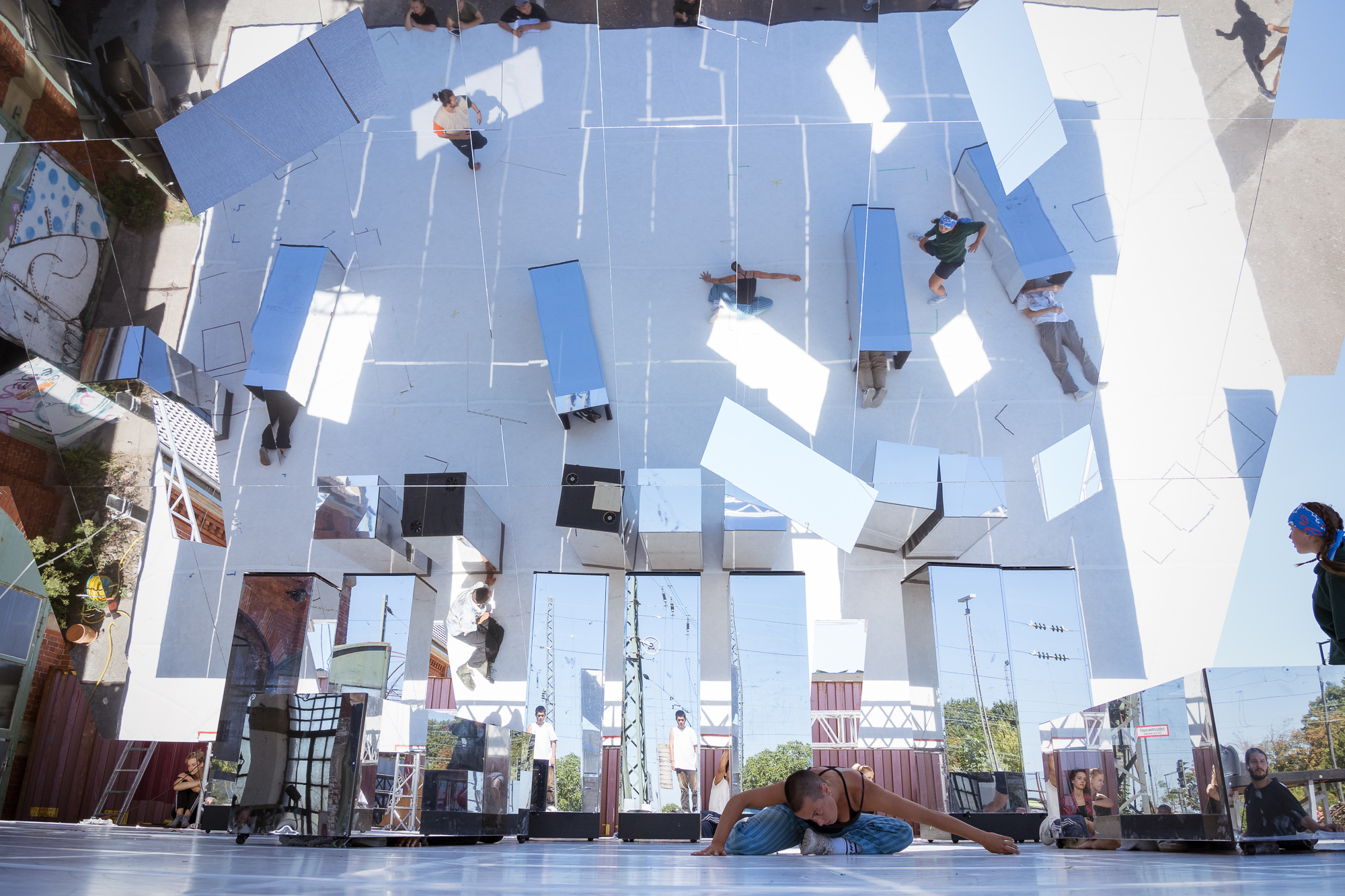
Dansa
La dansa és el llenguatge universal que subjeu al nostre projecte i que connecta els 100 ballarins profundament de maneres diferents. Entenem la dansa com una llengua de moviment que va més enllà dels estils de dansa individuals. No sols la mescla del nostre propi llenguatge de moviment, sinó també la creació amb i sobre la base de l’escenari únic, una visió fragmentada des de dalt, són un repte i un desenvolupament per als coreògrafs i els ballarins.
Les coreografies i les idees escèniques dels coreògrafs, d’una banda, i la creació participativa, per una altra, donen lloc a la diversitat i la inclusió que reflecteix no només els nostres ballarins i equip artístic, sinó també els nostres principis de teatre i producció: trencar patrons ben gastats i fer espai per al corrent.
Dance
Dance is THE universal language that underlies our project and that connects the 100 dancers deeply in different ways. We understand dance as a language of movement that goes beyond individual dance styles. Not only the mixing of our own movement language, but also the creation with and on the basis of the unique stage set, a fragmented view from above, are a challenge and development for the choreographers and the dancers.
Choreographies and scenic ideas of the choreographers on the one hand and participatory creation on the other, result in the diversity and inclusion that reflects not only our dancers and artistic team, but also our theatre and production principles: Breaking well-worn patterns and making space for the current.
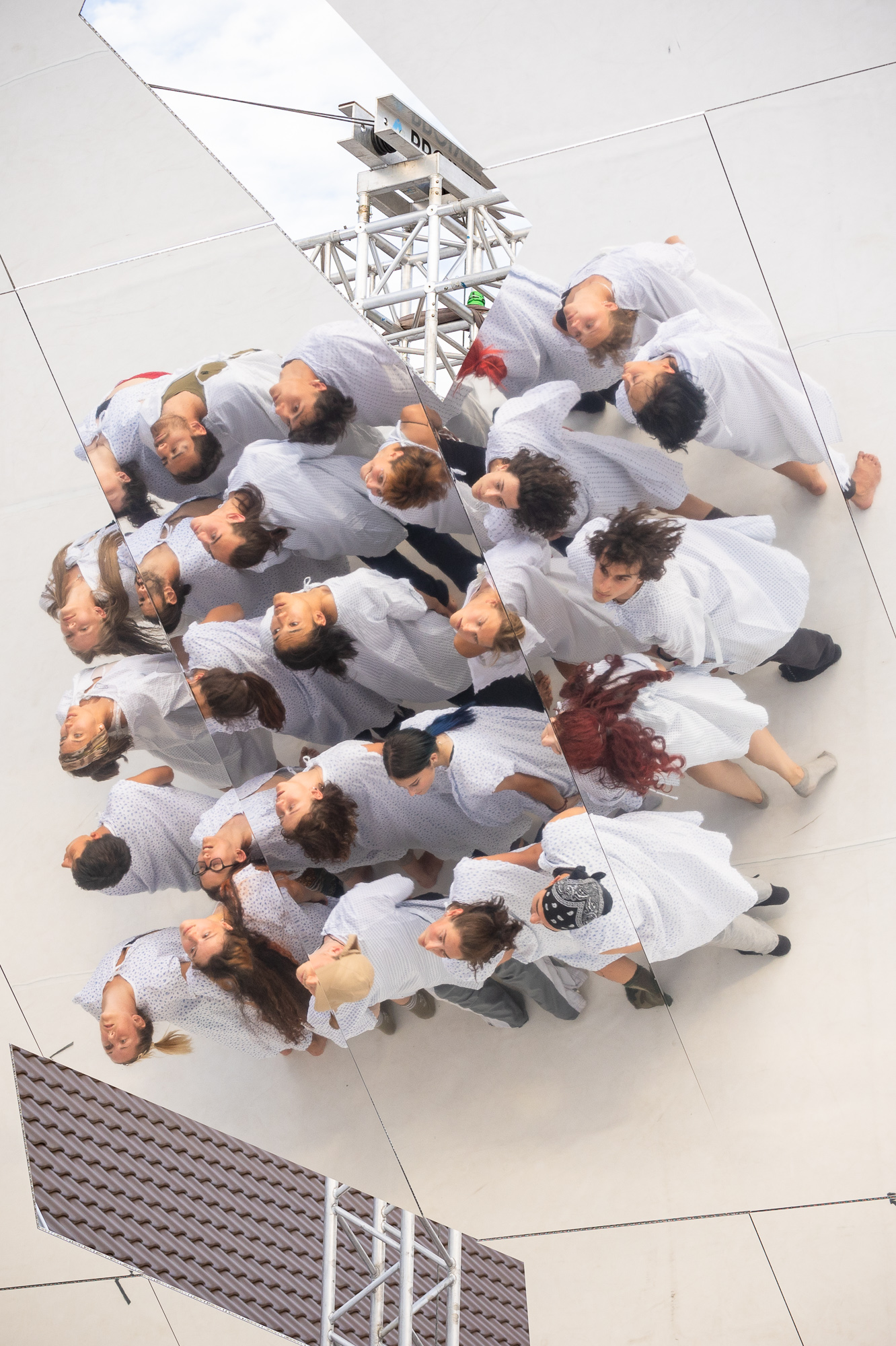
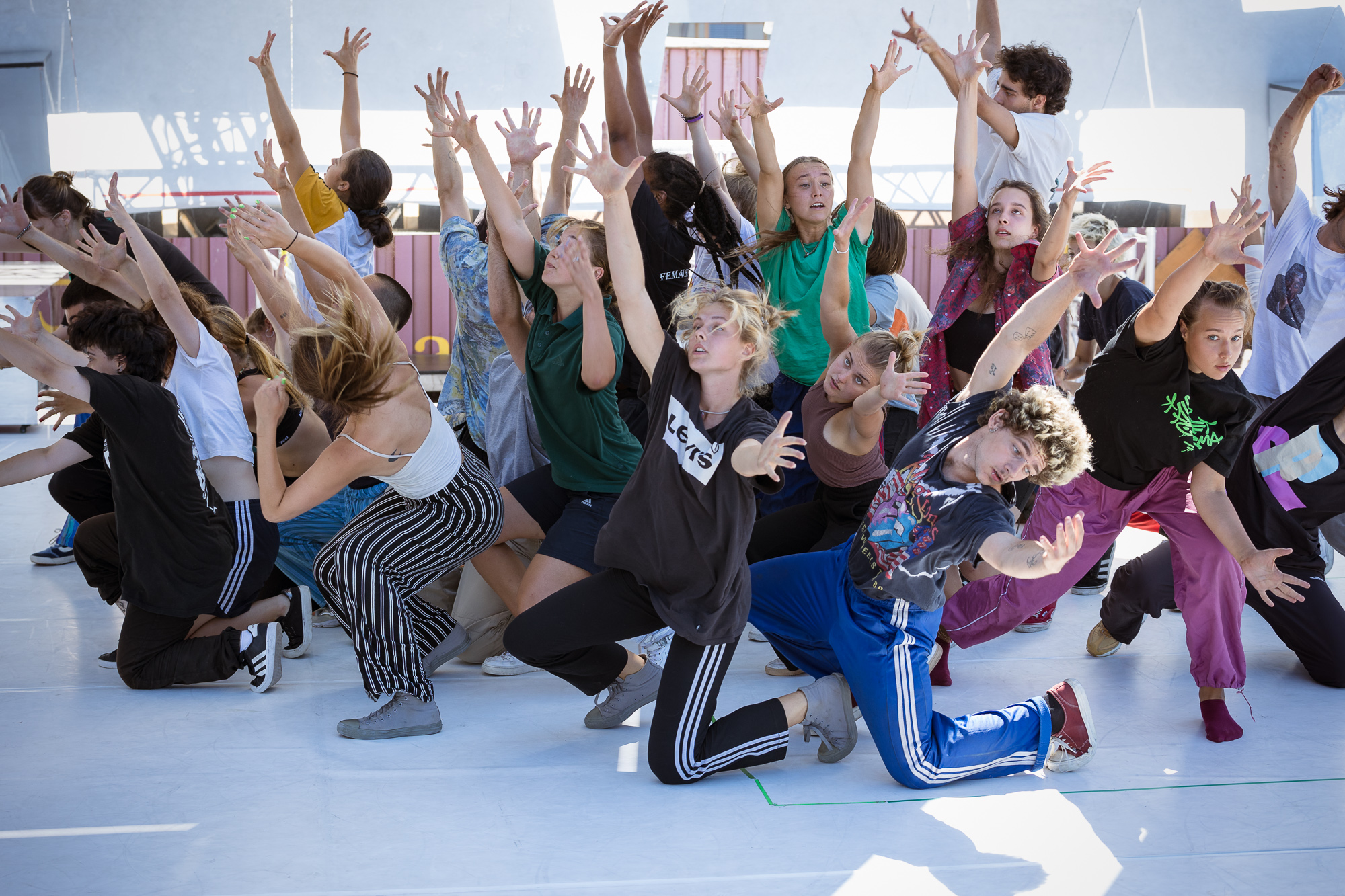
Stage Design
The stage concept of PPP has the major overarching theme of mirrors. In the first phase, this theme dealt predominantly with the personal reference and individual experience of this theme and the small mobile mirror objects travelled to the respective performance location. In the big production we use these objects again and combine them with a real analogue mirror above the stage area. The analogue mirror allows a different perspective through the reflection. Everything that happens on stage is also visible there. The audience can decide which perspective they want to take. In terms of content, we deal with the theme in relation to the mirroring of one’s own digital spaces, wishes and/or visions of a parallel digital world „the metaverse“.
Projektion
Projection is the connecting medium between the app and the stage set. The challenge was always to think on two levels. How does the stage look in the digital world and how does it look as a projection two-dimensionally on our analogue world. We decided to use voxels as texture and structure for all projections. These are the framework for the digital three-dimensional view in the app and at the same time the visual basis for the video projections. The theme of VR – virtuel reality – technology strongly influences our visual perception, which pretends to see something but to feel and experience it tactilely. The stage design is intended to create a similar perception through the different angles and perspectives. Spatial perception is questioned by the analogue mirroring of the stage action.
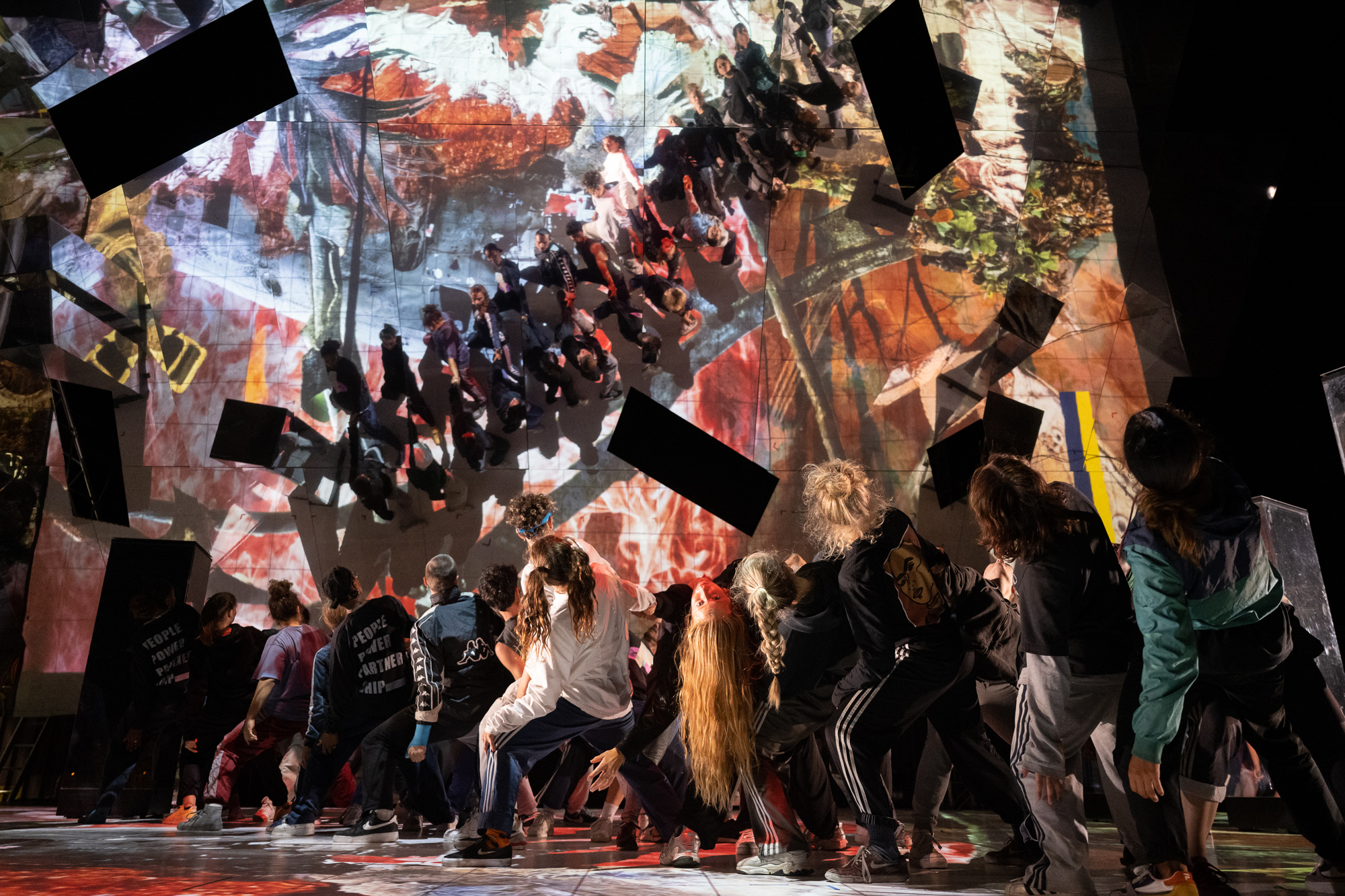
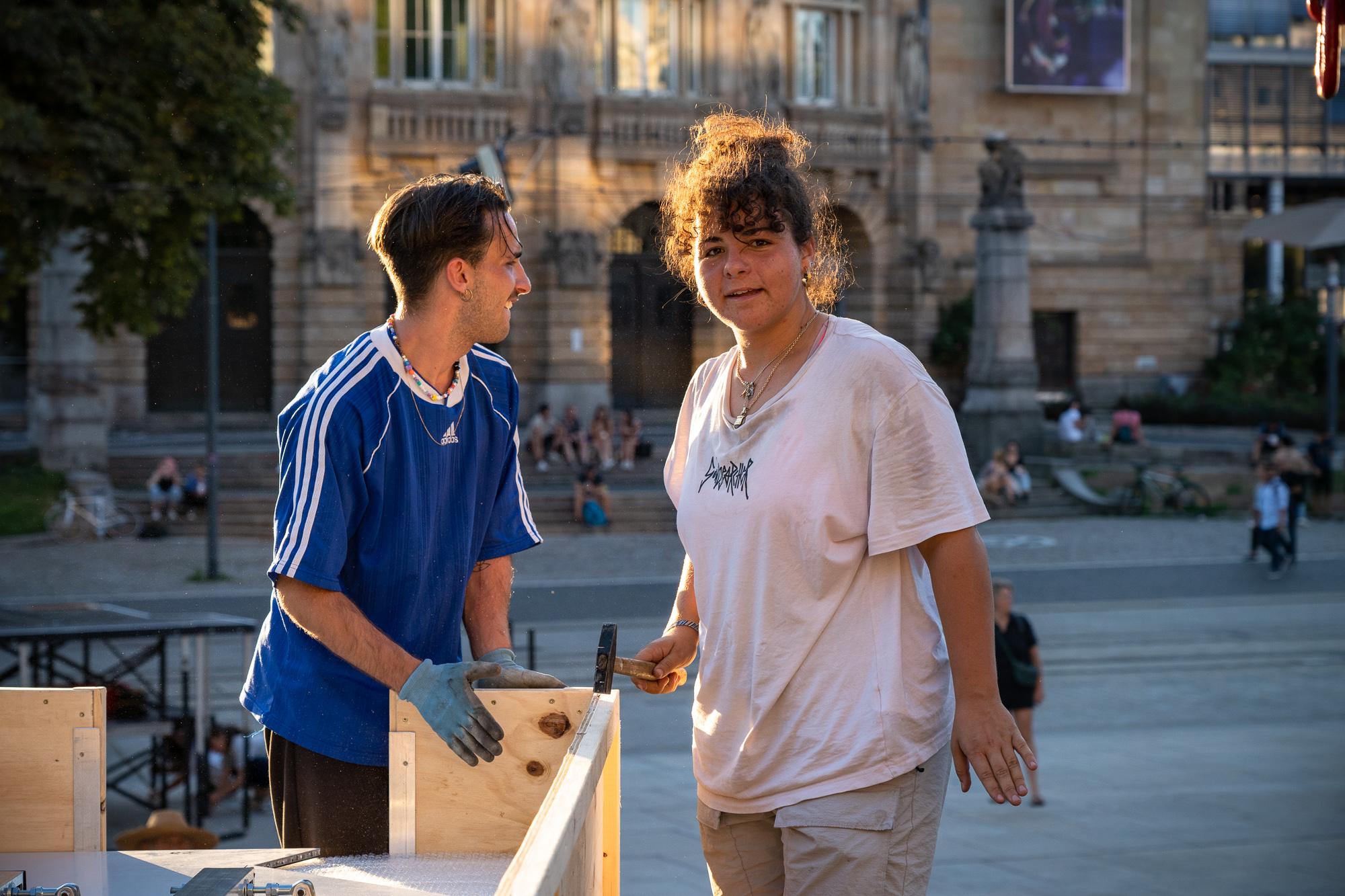
“Having a moving image under my feet is unusual already, interacting with its movement and being physically influenced by the visuals even more. During the piece the projection developes, transforms and creates diverse worlds under my feet. It shapes the laws of gravity and the environment I am moving in. I feel safe, standing on an island having a stable ground under my feet. Further I get thrown out in space as my island crashes and explodes. While surrendering in space and floating around, I can hold on to little pieces passing my way. Where does it guide me? What will happen next? For sure I know the line of the piece but having this dialogue with the visuals around me, evokes a true feeling of its impact on me. I react on what is happening to me which shapes my intention to move. It is a natural respond to outer influences which can not be controlled by me. There is no escape and I am fully involved. In a few scenes I actively look on the images and react on them, for instant while entering the bigger stage I follow the growing line on the floor, creating a path to my island. Or in the scene ‚Dreamland’ a light beam appears in front of me and invites me to move on it. In those moments I respond to what I see, however, in other scenes the choreography is not concentrated on us observing the visuals but we are moving as smaller elements in a bigger picture. Here I know the scenario around me but my awareness lays more in the connection with the other dancers and the dance itself.” – Cosima Dudel (Dancer)
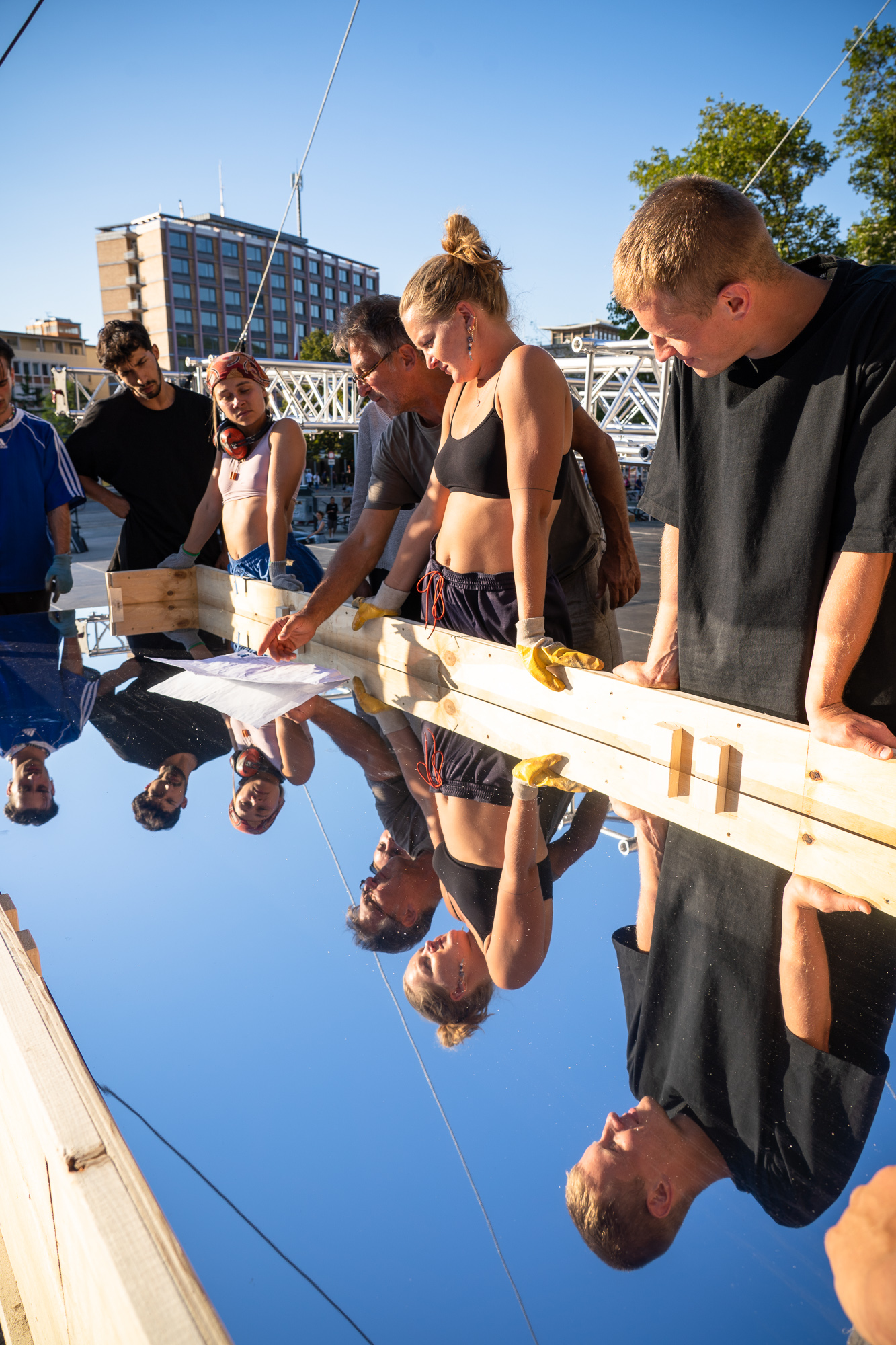
La projecció és el mitjà de connexió entre l’aplicació i el conjunt d’escenaris. El repte era sempre pensar en dos nivells. Com es veu l’escenari en el món digital i com es veu com una projecció bidimensional en el nostre món analògic. Vam decidir utilitzar vòxels com a textura i estructura per a totes les projeccions. Aquests són el marc per a la vista tridimensional digital a l’aplicació i al mateix temps la base visual per a les projeccions de vídeo. El tema de la realitat virtual influeix fortament en la nostra percepció visual, que pretén veure alguna cosa però sentir-la i experimentar-la tàctilment. El disseny escènic pretén crear una percepció similar a través dels diferents angles i perspectives. La percepció espacial és qüestionada pel mirall analògic de l’acció escènica.
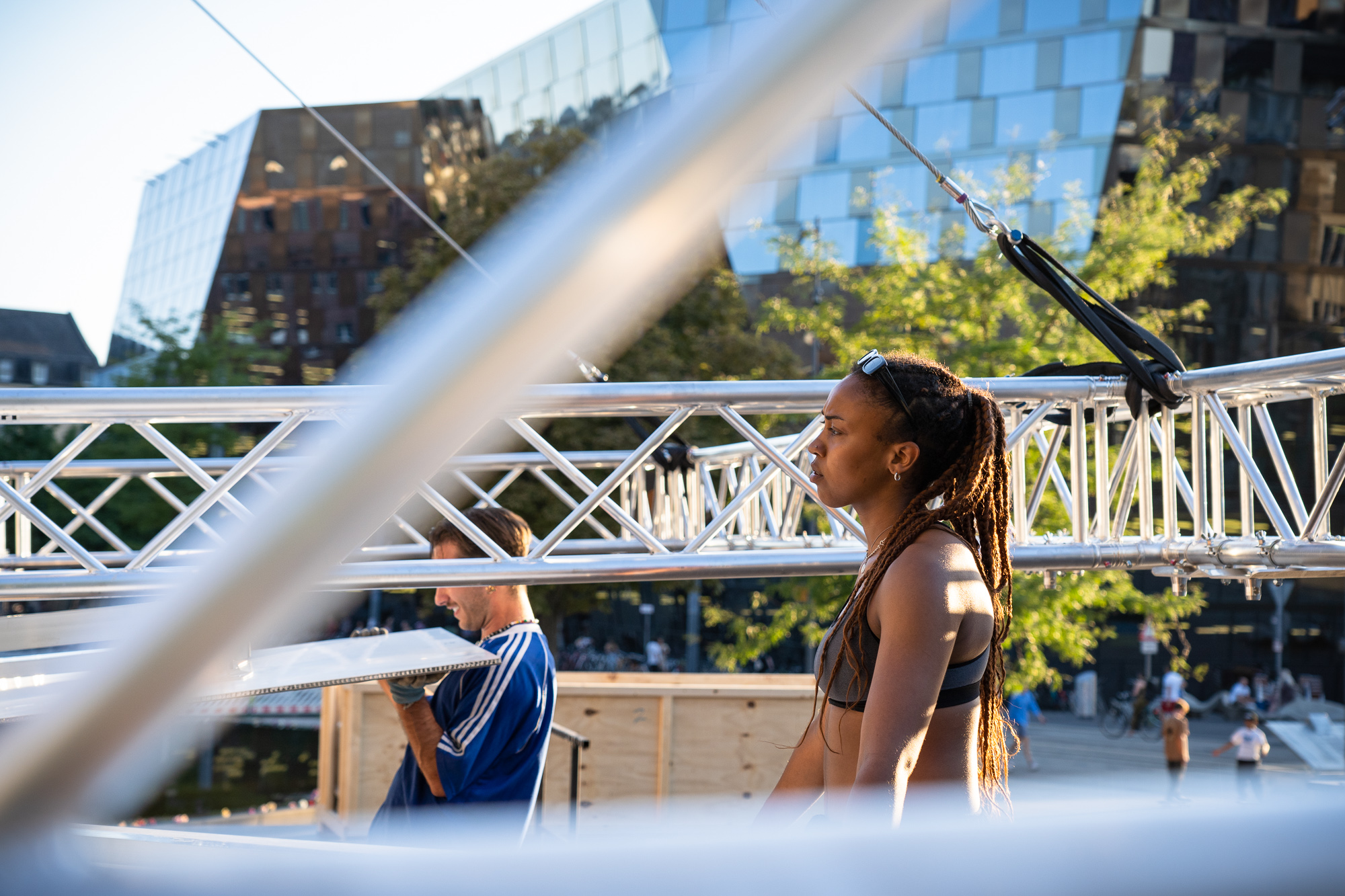
Photos: ©Jennifer Rohrbacher